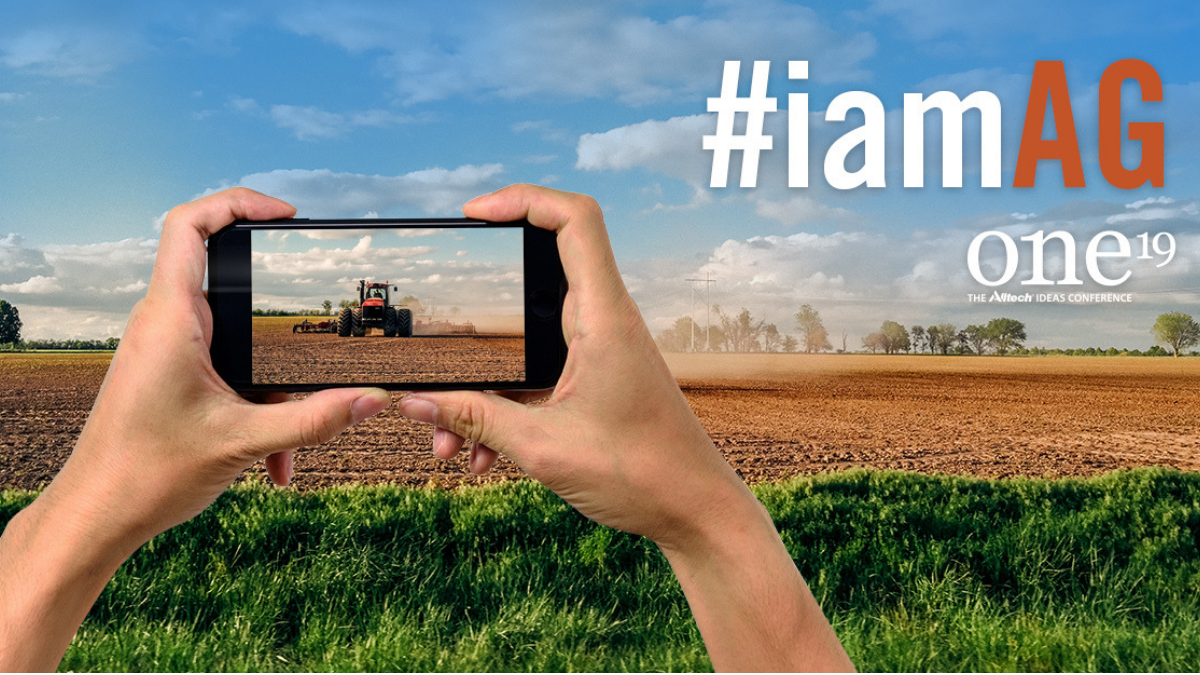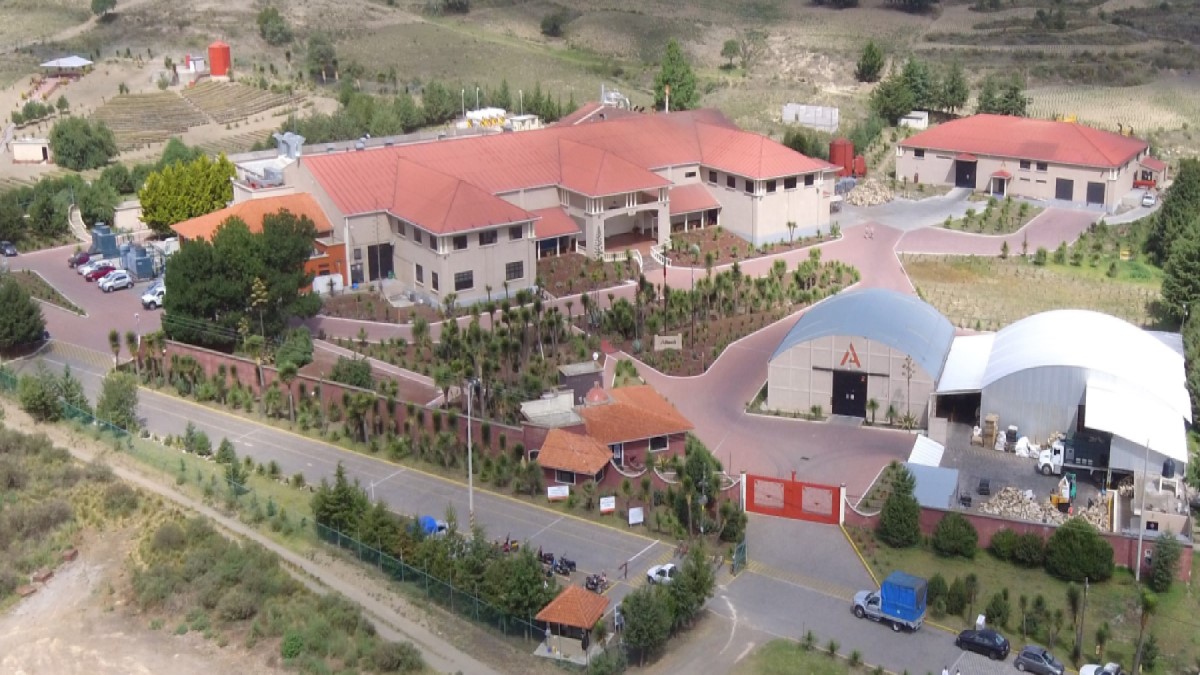By 2067, the per capita consumption of dairy is expected to increase from 87 kilograms (kg)/person to 119 kg (projections). Compounded by a growing population, the dairy industry will need to produce 600 billion kilograms more milk. This means today’s dairy cow will either need to double her production, or we will need to dramatically increase cow numbers! Over the last 25 years, we have increased milk production by 61 percent (about 2 percent per annum) — but can we continue to grow sustainably?
The difference between a high and low performing cow can be considerable. Milk production — judged by weight — is influenced by genetics and nutrition, but also by inconsistency in mixing of feed, eating behaviors (such as sifting), other cows’ bullying, water quality (or lack thereof!) and environmental factors, such as heat. In ever larger and more intensive production environments, with fewer people wanting to work on farms, management is emerging as an even more significant challenge. In such a setting, dairy farming has focused on managing the average cow, not the individual.
A glaring gap for dairy farmers is data. Farms, especially large ones, don’t know how much an individual cow eats, how much she drinks, how much she moves, her body temperature, stress levels, sickness, etc. Even individual milk production isn’t always recorded in a consistent manner.
How can farmers manage cow comfort, select the best animals for breeding and retaining, judge true profitability, meet prosumer demands for animal welfare and sustainability and raise the bar in terms of milk production? Without precise, real-time, smart data, the task of managing individual cows is nearly impossible. But emerging digital technologies could fill that data gap.
Sensors
More than any other technological advancement, sensors can fill the data gap in dairy farming, particularly when animals are outside in a field. Before the use of technology, monitoring an individual cow’s health was difficult, time consuming and cost-intensive. However, the use of sensors and wearable technologies allows farmers to monitor individual cows. No longer do producers have to work from herd averages; they are now able to determine individual illness or lameness more effectively and react accordingly, quite possibly before milk production or the rest of the herd is affected.
Wearable sensors have proven valuable in managing a cow’s health, and there is no shortage of companies producing this type of technology. Leaders — such as SCR Dairy, which is assessed to have about 80 percent of the market share — produce all manner of wearables worn on a cow’s ears, neck, legs or tail. They can even be implanted subcutaneously or inside the rumen.
Sensors help monitor cow comfort and welfare. Cows need to rest for an average of 11 hours per day; any less than that affects blood flow to the udder and can negatively impact milk yield. Sensors can detect a lack of locomotion and alert producers when to circumvent these negative effects.
Sensors can be used to detect disease signals that are otherwise hard for farmers to notice, such as mastitis. AfiMilk, Agricam, Fullwood, DeLaval, Lely, LIC Automation, MastiLine and Wakaito all claim to detect mastitis in cows and provide producers with early opportunities to combat the issue.
Rumination is also vital to a cow’s production, and sensors designed to be located inside the rumen can monitor acidity levels through a digitally connected bolus. Companies that offer acid monitors — like Smartbow, which was a participant in the Pearse Lyons Accelerator — allow farmers to detect digestive problems, such as ruminal acidosis.
Livestock Labs has created a tracking technology called EmbediVet, which is implanted underneath the cow’s skin using a local anesthetic. This tracker claims to be less bothersome than wearable sensors and more accurate in gathering data and monitoring behavior.Ingenera offers a line of various sensor products designed to measure cow conformation, weight, udder health and other body metrics.
Moocall, also a participant in the Pearse Lyons Accelerator, produces sensors that detect the heat cycle of the cow by evaluating her responsiveness to a teaser bull. His proximity and behavior can determine her receptivity and alert the farmer's smart device if she is in heat. Afimilk makes a pedometer for cows, alerting farmers of the best time for insemination on the basis that cows walk and move more as they come into estrus.

Image courtesy of MooCall
Moocall also makes the Moocall Calving sensor, a wearable that attaches to the cow’s tail and monitors her contractions. Connected to the producer’s mobile phone, it sends an alert one hour before active calving, allowing farmers to minimize time spent checking pregnant cows and increase efficiency in time management.
Outside of wearables on cows, there are other examples of sensors in the dairy industry. The startup SomaDetect has developed a sensor that enables farmers to know what is in the milk they produce. Specifically, there is an in-line sensor that measures milk fat, protein, somatic cell counts, progesterone and antibiotic residues (not allowed for human consumption) at every milking. Danish company Foss Analytics has a similar business model, using sensors and NIR.
ENGS systems is implementing their free-flow technology through the Advanced Milk Meter. It collects data on the cow’s individual milk flow rate, quantity, temperature and electrical conductivity and transfers the data to a milk management program for farmers to use.
Artificial intelligence
Big data promises precision agriculture; however, if farmers can’t interpret the data and use it to take action, the data is useless. Artificial intelligence allows producers to analyze the data collected by sensors and other hardware technologies and can provide interpretations and solutions by mimicking human decision-making — potentially transforming how a dairy farm operates.
SCR Dairy is implementing cow, milk and herd intelligence through their sensors and artificial intelligence technologies. They offer sensors ranging from heat detection and calving to health monitoring sensors — including the SenseTime Solution sensor, which detects and charts a cow’s daily activities, such as ruminating, eating and walking patterns. When paired with artificial intelligence software, this sensor provides users with early, proactive solutions to problems. Along with the capability to record information about reproduction, health and nutrition, the sensor also provides farmers with solutions for each individual cow.

Image courtesy of Cainthus
Cainthus has developed algorithms for facial recognition software that can monitor a cow’s activity. There is no need for the cows to wear any sort of tracking device, and this software may eliminate the need for wearables all together, particularly for animals raised indoors. Using cameras stationed throughout the barn, the software alerts farmers when their cows show early signs of lameness. Cargill has a significant minority investment in Cainthus, capitalizing on the notion that this “machine vision” approach will allow AI to supplant many of the sensor systems.
Developed by Connecterra, Ida, “The Intelligent Dairy Farmer’s Assistant,” is a cow neck tag that gathers activity data on cows, such as time spent eating, ruminating, idling, walking and lying down. Connecterra says it uses AI to interpret individual deviations in the cow’s behavior and provide alerts or recommendations to the farmer.
Drones
There are opportunities for drones in the dairy industry, but they often require additional technologies. Drones can be used to generally inspect the herd or fences or to aid in herding cows from fields to barns.
The inclusion of other technologies presents greater opportunities. Visual sensors have proven to be instrumental in surveying land and measuring pasture growth. PrecisionHawk is using drones to map, inspect and photograph pastures in order to detect growth.
Algorithms enable drones to identify cows specifically and avoid confusing them with deer or similar animals. When combined with thermal imaging, the opportunities to locate and track cows increases dramatically, particularly in fields spotted with trees or dense foliage. Temperature detection would allow farmers to identify abnormal behavior in the cow, such as lameness, illness or calving. Drones may become more useful in these areas, particularly if battery life is prolonged and autonomous flying ability is improved.
Robots
Robotic milking machines are probably the most well-known application for robots in the dairy industry, increasing efficiencies and replacing expensive or unavailable labor. Lely’s Astronaut A5 and DeLaval’s Voluntary Milking System not only cut labor costs, they also allow cows to decide when they want to be milked. Robotic milkers (milkbots) clean the udders, identify the cow’s teats and milk automatically.
DeLaval offers other robotic milking technologies, such as the rotary platform, which allows farmers to maximize a herd’s milking performance while providing a comfortable and safe environment for both cows and operators. miRobot provides a milking system also designed for larger operations. Both companies offer multi-stall, automated milking operations to milk cows simultaneously, completing full parlors with only one operator. This new technology has allowed farmers to cut back on labor costs and achieve more milkings per day.

Image courtesy of Lely
The Lely Grazeway system acts as a gateway to the pasture that only allows cows to graze after they have been milked. The cows step into the selection box, and the Lely Qwes cow-recognition system determines whether or not the cow can be let out to graze.
Before robots, cows were typically milked twice a day because of labor and time constraints. Now, cows can be milked three times a day or more, greatly increasing production and profits. In addition, while the cows are stationary for several minutes during milking, there is also an opportunity for medical and health assessments using transponders or sensors — which can not only analyze the speed, amount and quality of milk produced but also how much the cow has eaten, its heat cycle and more.
Another possible use for robots includes cleaning and sanitizing the barn, allowing for better biosecurity measures that will lead to healthier conditions for the cows. There might also be a place for robots in the calving process. While this might not be as useful for an outdoor herd, there is the potential for robotic assistance for cows kept indoors.
3D printing
There are multitudinous applications for 3D printing in the dairy industry. A primary application of 3D printing is for machine parts, which may be of particular interest to rural farmers, saving valuable time and even possibly money, depending on the part needed.

Image courtesy of Perfect Day
In some ways, 3D printing is already challenging the dairy industry, through 3D-printed foods. Cheese is one of the easier foods to duplicate through 3D printing, due to its easily changeable state from solid to liquid. Studies suggest that printed cheese is less sticky, softer and has better meltability than non-printed cheese. The concept of printed food may not appeal to all consumers, though, so the challenge is to produce food that offers an advantage, such as lower cost, improved taste or better nutritional content.
Such is the case with “Perfect Day,” a startup company from San Francisco using 3D printing combined with gene sequencing to create a yeast fermentation product that looks and tastes like milk. The product is portrayed as a non-dairy alternative for vegans or dairy-intolerant individuals.
Augmented reality
Augmented reality (AR) can be defined as the integration of digital information with the user’s environment in real time. A recent report stated that sales for augmented reality are expected to rise from $2.4 billion in 2018 to $48.2 billion in 2025.
Studies have found that AR can be used to make food more visually appealing or to effectively estimate proper serving sizes. Apple’s ARKit can also be used to provide consumers with nutritional knowledge, as this video demonstrates. Should this technology become more common, these applications could affect the dairy industry, as certain aspects of food products — both good and bad — would be more readily available to the consumer.
Outside of the consumer focus, augmented reality can be used to allow producers an alternative way to monitor and evaluate cows. This video (skip to the 2:22 mark) demonstrates how AR can allow a farmer to immediately see stats relating to the farm through the use of goggles. Information relating to each individual cow is overlaid through the glasses into the farmer’s field of vision. He can see information on everything in the facility and even evaluate the quality of the milk.
Could this technology not also be used in the veterinary field for inspection and observation? Perhaps if combined with reliable sensor data, the vet could be able to deliver appropriate recommendations for disease management and reduce the need for direct farm call visits, thus lowering costs.
Virtual reality
Virtual reality (VR) is defined as a digital environment that can be interacted with in a seemingly real way through electronic equipment. Applications in the dairy industry vary from farm tours to veterinary training, with positive impacts on safety and efficiency.
New Zealand dairy cooperative Fonterra and solutions company Beca have partnered to develop a virtual reality health and safety training technology that allows employees to navigate the manufacturing and distribution sites without actually setting foot on the physical site, thus reducing onboarding times. Fonterra employees learn to identify potential hazards and experience hazardous situations in a realistic simulated environment, enhancing learning experiences without the risk of being in harm’s way. This technology also reduces labor costs by replacing a number of hands-on health and safety training positions.
Virtual reality is being used to teach veterinary students about the reproductive and rectal tracts of the cow. Created by former vet Sarah Baillie, the Haptic Cow is a fiberglass model of the rear of a cow that combines virtual reality with robotics. The VR aspect is provided by a computer that allows students to visualize an object within the cow — virtually enabling them to practice fertility examinations, such as pregnancy detection, or determine reproductive concerns without putting them in a situation that could be dangerous for both the cow and the student.
DeLaval is creating virtual reality films of farms available in 360 degrees, allowing viewers to scroll from side to side to view the entirety of the dairy barn. The Hamra Farm in Sweden, for instance, showcases the innovative techniques they implement on their farm, such as robotic milking machines, robotic brushes, robotic cleaners and more, in their VR film. These "farm tours" will allow consumers to better understand where their dairy comes from. There is much discussion about animal welfare, and giving consumers an opportunity to experience firsthand how a dairy farm operates is an important component of influencing perception the industry.
Blockchain
It is well known that consumers are increasingly becoming interested in where their food comes from and how it is produced. Blockchain can connect all aspects of the supply chain from producer to consumer and allow for food traceability and safety. From an agriculture and food perspective, offering this type of information to consumers will become a competitive advantage and may not prove as challenging in dairy as in other areas of agriculture, such as beef, which exchanges ownership more frequently.
Internet of Things
Together these eight technologies are creating opportunities within the dairy industry for increased efficiencies, profitability and production. The connectivity of these technologies is made possible through the Internet of Things (IoT).
Agriwebb is a company using IoT for full farm recordkeeping, including field management, inventory, operations, grazing and even biosecurity. Stellapps in India leverages IoT to offer all manner of products, from general herd management to milk evaluation, payment processing and cold chain monitoring. Dell Technologies is also heavily involved in IoT applications and is working with dairy producer Chitale.
Cargill is working with SCiO (Consumer Physics) to create Reveal, an app designed to deliver content of feed within minutes. Previously, this type of technology was either time-intensive (waiting on lab results) or expensive (specialized equipment cost thousands of dollars). Using a micro spectrometer with NIR calibrations, Cargill and SCiO offer this simple service using producers' own devices, and results are available in a minute's time.

IoT technology is how the KEENAN InTouch system is able to provide farmers with the nutritional information they need to ensure the best formulation possible. KEENAN’s feed mixers are designed to give uniformity to feed, allowing for improved digestion in the ruminant and creating rations that are both chemically and physically balanced. The cloud-based system enables producers to monitor feed waste and make necessary changes to improve efficiencies and decrease costs.
Using the data
In the past, farm management applications have allowed farmers to make strategic management decisions based on the collection of farm data. Inevitably once nutritional decisions are being made, sciences such as nutrigenomics and decisions about smart nutrition are critical to taking advantage of this enhanced data and management information systems. Nutrigenomics research has shown that specific nutrients and inclusion of enzymes can greatly impact milk yield.
Previously, collected data was generalized for an entire dairy farm. Through the use of sensors, AI and other technologies, farm management apps like FarmWizard can provide individual data for each cow, allowing farmers to improve precision and accuracy when making managerial decisions.

Dairying in 2067 won’t look anything like the dairy farming of the recent past, let alone the era when the first cow was domesticated. Changes are happening so fast that the connected farm is likely to be the norm within the next 10 years. By implementing the eight technologies described here, along with the interconnectivity of IoT, farmers will be able to capture and have direct access to individual cow data, both current and historical. This will enable farmers to bridge the data gap and improve dairy production through digitization. The winners will be those who embrace this disrupted digital dairy landscape.
I want to learn more about implementing new technologies on my dairy farm.




























